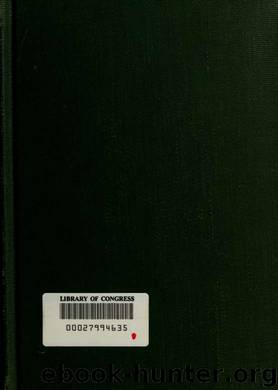Anatomy and embalming; by unknow

Author:unknow
Language: eng
Format: epub
Tags: Embalming
Publisher: Cincinnati, Ohio, The Embalming book company
Published: 1913-03-25T05:00:00+00:00
deep, penetrating wound, its course and extent should be ascertained by careful dissection rather than by the use of a probe.
If the edges of a wound be inflamed and suppurating, or beginning to heal, it must have been inflicted some time before death. In a wound inflicted a short time before death the edges are usually everted; there may he more or less extravasation of blood into the surrounding tissues, and the vessels contain coagulated blood; but sometimes none of these changes occur. The chief characteristics of a wound inflicted after death are absence of a considerable amount of bleeding, non-retraction of edges, and the absence of extravasation of blood into the tissues. But a wound inflicted within two hours after death may resemble very closely one received during life. In general, unless a wound is old enough for the edges to present inflammatory changes, the embalmer must be very careful in asserting its antemortem or postmortem character.
(g) Fractures. —It may be important to determine whether a bone was fractured before or after death. This point can not always be decided. Fractures inflicted during life are, as a rule, attended with more extravasation of blood and evidences of reaction in the surrounding tissues; but fractures produced within a few hours after death may resemble these very closely. Usually a greater degree of force is necessary to fracture bones in the dead than in the living body.
(h) Scars and Tattoo Marks. —The presence and
Download
This site does not store any files on its server. We only index and link to content provided by other sites. Please contact the content providers to delete copyright contents if any and email us, we'll remove relevant links or contents immediately.
The Art of Coaching by Elena Aguilar(52197)
Thinking, Fast and Slow by Kahneman Daniel(11798)
The Art of Thinking Clearly by Rolf Dobelli(9920)
The 5 Love Languages: The Secret to Love That Lasts by Gary Chapman(9290)
Mindhunter: Inside the FBI's Elite Serial Crime Unit by John E. Douglas & Mark Olshaker(8707)
When Breath Becomes Air by Paul Kalanithi(8042)
Periodization Training for Sports by Tudor Bompa(7928)
Becoming Supernatural by Dr. Joe Dispenza(7841)
Turbulence by E. J. Noyes(7705)
Bodyweight Strength Training by Jay Cardiello(7680)
Therapeutic Modalities for Musculoskeletal Injuries, 4E by Craig R. Denegar & Ethan Saliba & Susan Saliba(7601)
The Road Less Traveled by M. Scott Peck(7281)
Nudge - Improving Decisions about Health, Wealth, and Happiness by Thaler Sunstein(7247)
Mastermind: How to Think Like Sherlock Holmes by Maria Konnikova(6942)
Enlightenment Now: The Case for Reason, Science, Humanism, and Progress by Steven Pinker(6877)
Win Bigly by Scott Adams(6829)
Kaplan MCAT General Chemistry Review by Kaplan(6601)
Why We Sleep: Unlocking the Power of Sleep and Dreams by Matthew Walker(6362)
The Way of Zen by Alan W. Watts(6290)
